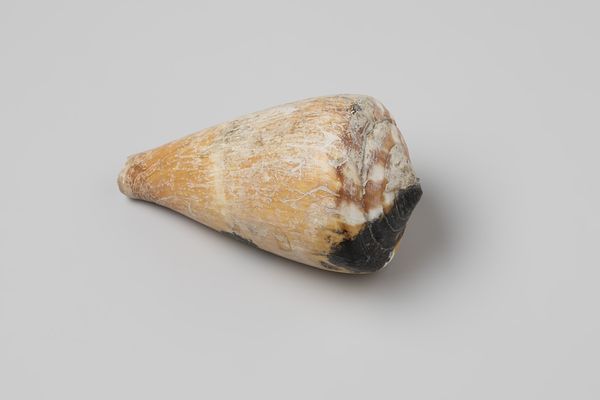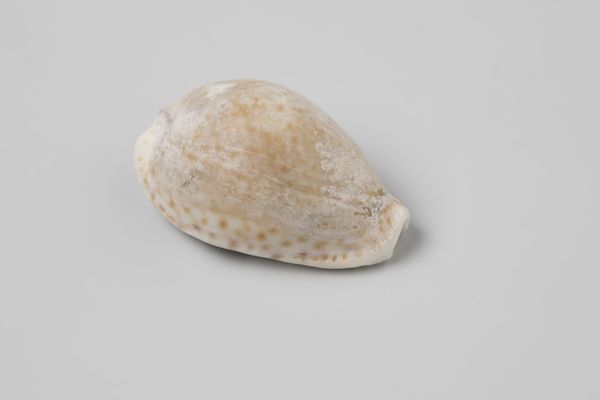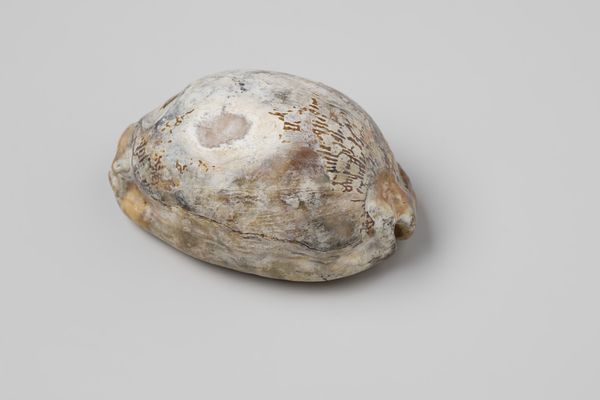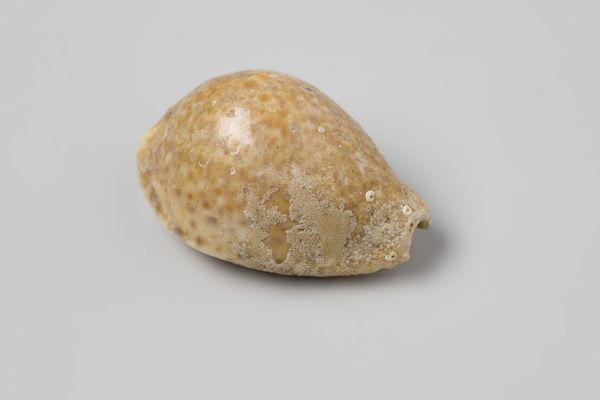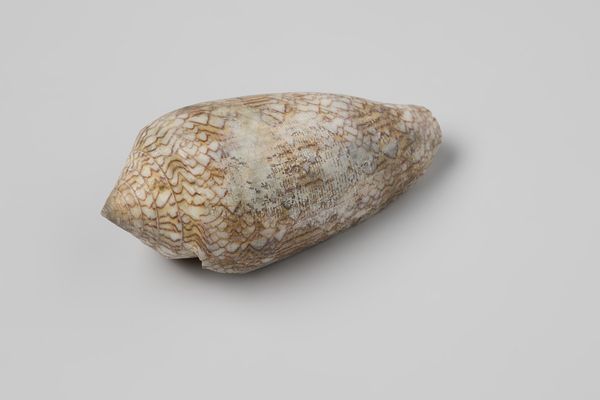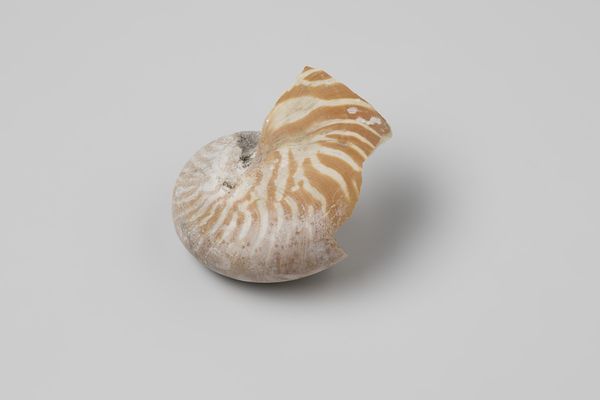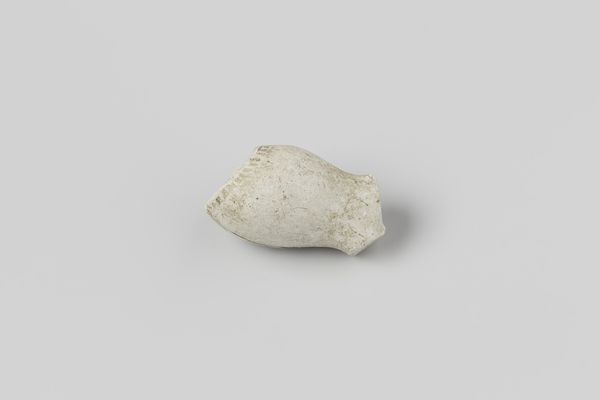
Conus quinaicus shell from the wreck of the Dutch East India ship Witte Leeuw before 1613
0:00
0:00
found-object, photography
#
still-life-photography
#
found-object
#
photography
#
ceramic
#
product photography
#
prehistoric
#
nature closeup
Dimensions: length 2.8 cm, width 1.5 cm, height 1.6 cm
Copyright: Rijks Museum: Open Domain
Editor: Here we have a photograph of a Conus quinaicus shell, which dates from before 1613. This object was recovered from the wreck of the Dutch East India ship Witte Leeuw. I’m struck by how this seemingly simple object carries so much history with it. What resonates with you when you look at it? Curator: For me, it is potent, how a single shell becomes a powerful symbol. This isn't just a pretty object, it’s a fragment of a lost world, a memento of ambition, trade, and ultimately, disaster. Consider the shell itself. Conus shells have, in numerous cultures, symbolized wealth and status. Does seeing this object make you reflect on the cultural significance tied to such objects, even now? Editor: I see your point. The shell did not arrive here by chance but was chosen. Given its role as currency, could the wreck also reveal broader patterns about globalization and the status attributed to certain objects? Curator: Precisely! The shell echoes a human narrative; a quest for exotic goods, and perhaps, the reckless expansion of European powers. Look at its simple conical form. Even that points towards an ancient language of design. Pyramids, obelisks… all reflect this reaching towards the heavens. But unlike these stable structures, this shell found its way to the seafloor through instability. Editor: So the symbolism shifted after the ship went down, acquiring new layers of meaning beyond wealth. It’s now a poignant symbol of human hubris and the unpredictable nature of fortune. Curator: Indeed! What was once a treasure became a reminder of vulnerability. We should always remain skeptical about narratives we’ve created for ourselves. These are often very fragile. Editor: Thanks! Thinking about the journey of this shell from a status symbol to an emblem of misfortune really expands the object's meaning. I will look at ordinary things around me in a different way. Curator: And that, perhaps, is the most important thing art can do - change the way you perceive the everyday world.
Comments
No comments
Be the first to comment and join the conversation on the ultimate creative platform.


